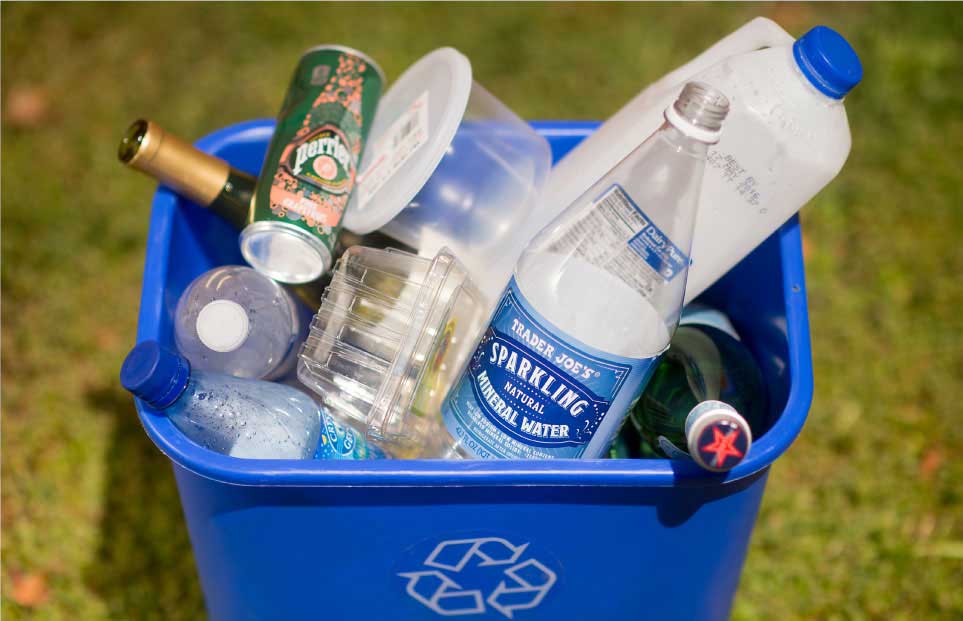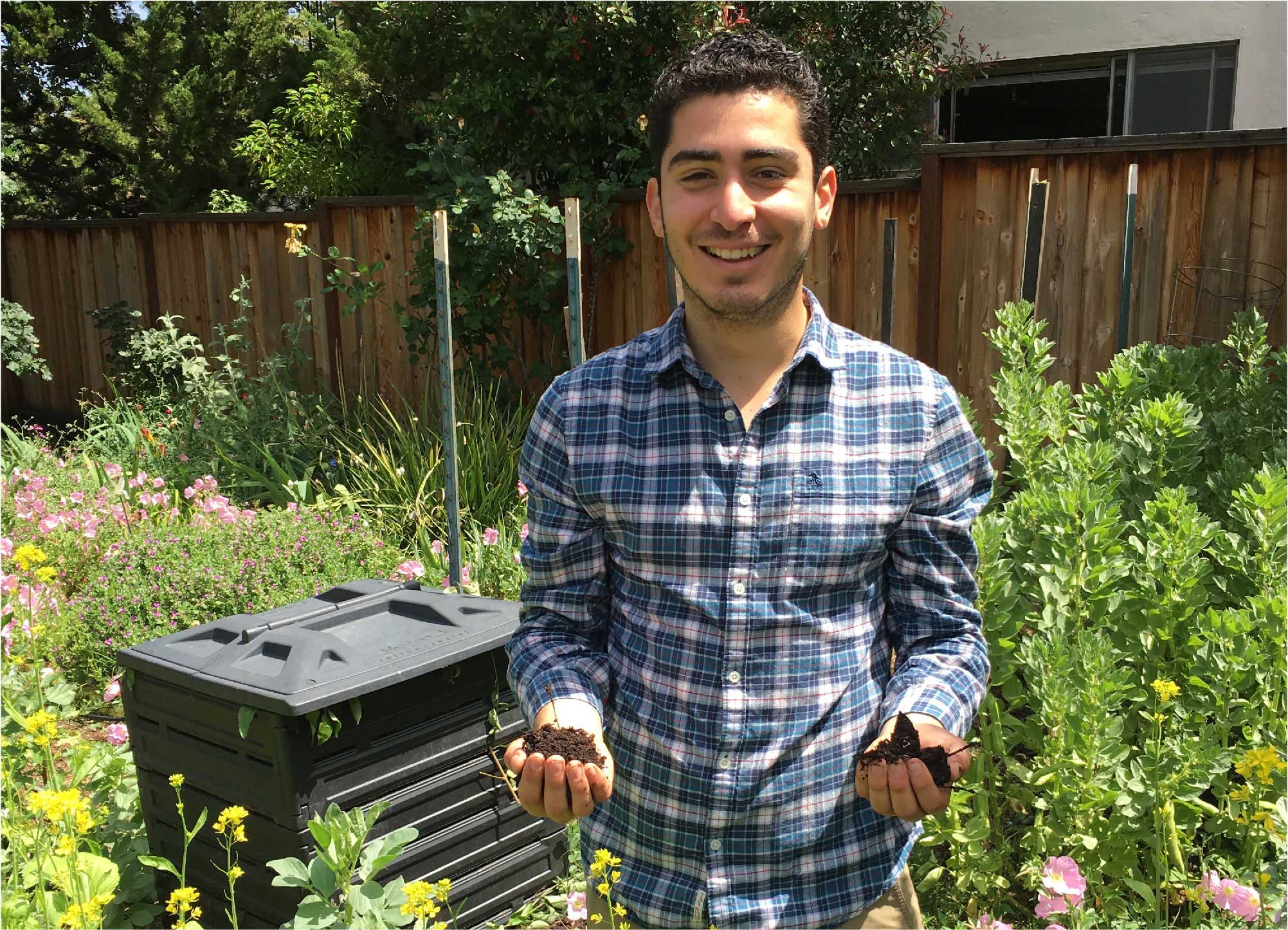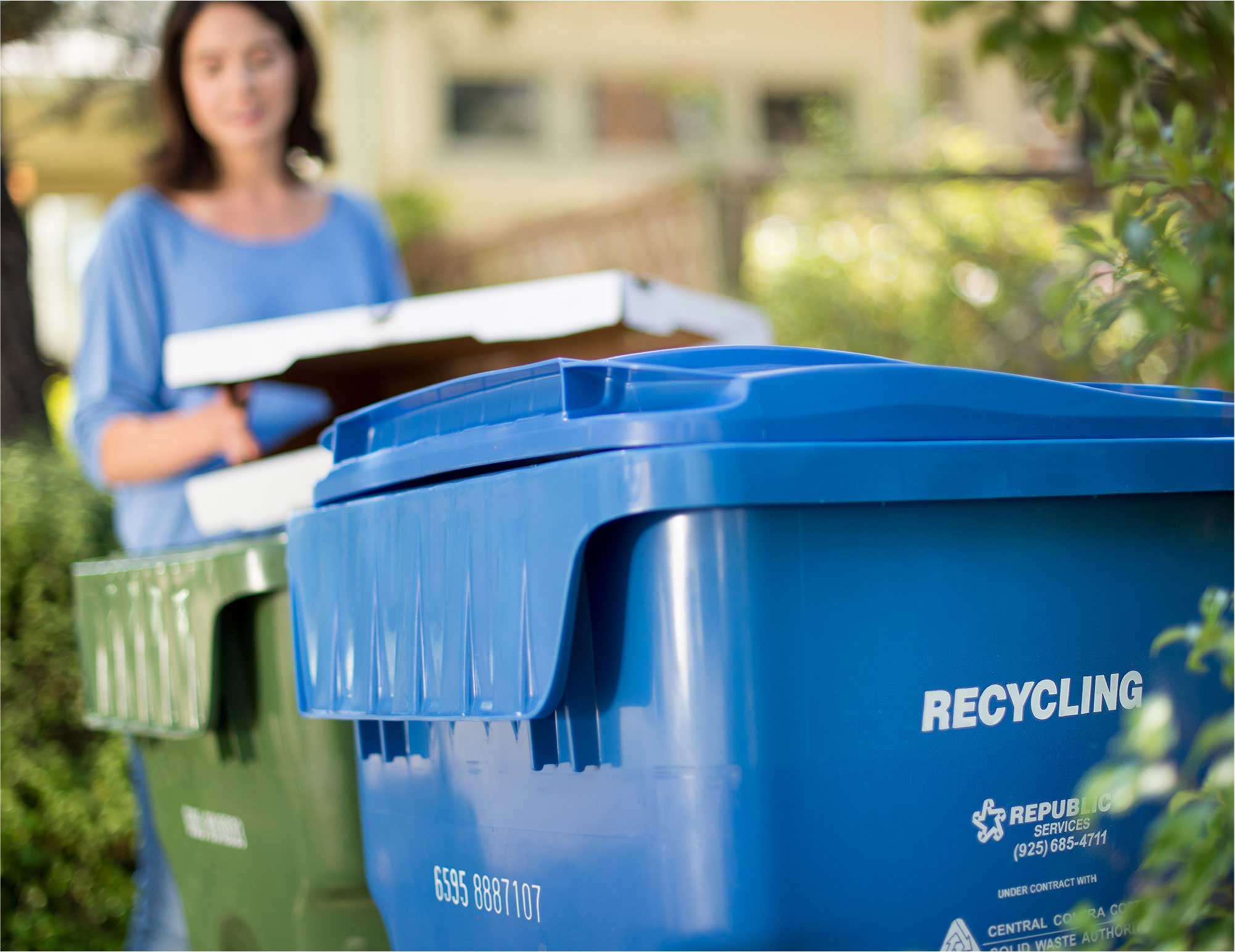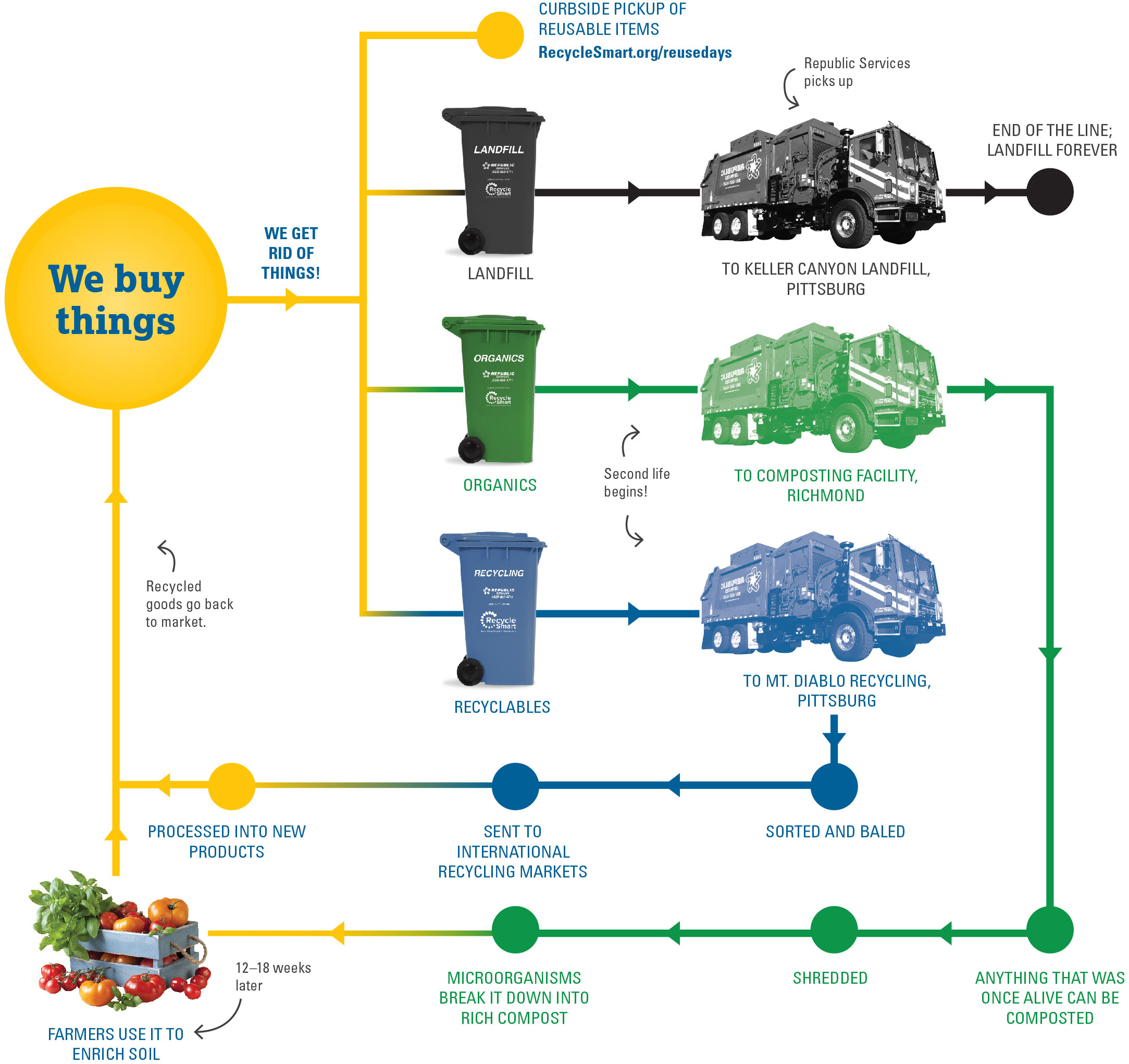
 Mean?
Mean?It’s all in the numbers. Plastics are made of many different chemicals. The little “chasing arrow” triangles contain a number code that identifies which chemicals were used to create that container. Not all plastics are recyclable but RecycleSmart will take them all (except a few) and do the sorting for you!


The items you put out on your Reuse Day have a useful second life with community members in need—and you keep those materials out of the landfill. But there’s even more…

Mt. Diablo Recycling picks up your curbside reusable items on your Reuse Day and offers them to local nonprofit agencies to distribute. They are now working with Opportunity Junction on an online database of all available inventory that has organized and streamlined the distribution process. And that’s doubling the community benefits—Operation Junction’s Job Training and Placement Program helps low-income residents gain the computer and office skills needed to develop a meaningful career. Participants now work a 4-month paid internship at Mt. Diablo Recycling, which helps build their resumes and move them on to full careers.

Growing up, Lukas Martinelli was an avid gardener. Love bloomed when he finally looked at dirt through a microscope.

“I realized that the soil beneath our feet is the skin of the Earth, home to billions of organisms that supply us with food, water, fuel and fiber,” he says.
Lukas is now a 23-year-old soil scientist doing research at Cal on environmental remediation and restoration. He wanted to learn more about home composting, to help encourage friends and neighbors to compost at their homes. “Composting our organic material at home is really fulfilling. It recomposes life via decomposition, regenerates the health of our soils, mitigates the effects of drought and reduces our carbon footprint.”
He recently became one of the youngest graduates ever of CompostSMART, our free, 6-week workshop and outreach program for those who’d really like to dish the dirt in the community. Neighbors and groups can have a CompostSMART graduate come show them how easy it is to compost.
Lukas is now ready to come to your house to encourage your hidden love for dirt.
RecycleSmart, in partnership with Mt. Diablo Recycling, started the student scholarship program in 2015 to inspire and reward student leaders who have made significant contributions to reducing waste at their high schools. This year $2,500 scholarships were awarded to:
Each of these students worked hard on the environmental “4 R's” for schools: reduce, reuse, recycle and rot. Our thanks and congratulations!

Follow the process of where your stuff goes after you dispose of it through composting, recycling and landfill.



Americans spend $218 billion a year on growing, processing, transporting and disposing of food that is never eaten. Californians throw out almost 6 million tons of food every year! Wasted food in trash is 18% of what ends up in landfills. And unlike natural composting, landfill decomposing emits methane gas, a greenhouse gas 56 times more destructive than carbon dioxide. Just a little more composting can have big impact on reducing GHG emissions.
KID'S CORNER
Yep! It’s not magic, just a little plant science. Here’s how to do it.

1Peel a banana—have a banana split!
2Pull the banana peel apart until the strips separate.
3Take the peel into the garden. With a parent, dig a small trench about 2 inches wide, ½ inch deep and as long as your banana peels.
4Water the trench, put the banana peel strips in it and put carrot seeds on top, 1 inch apart.
5Cover the seeds with soil and water gently every few days to keep soil moist. The banana peel will feed the carrots! (Follow growing directions on the seed packet.)
6Wait a few weeks and enjoy eating your carrot!

If you put your banana peel in the green bin, we’ll compost it for you and your banana will become food for the fruits and vegetables you eat!